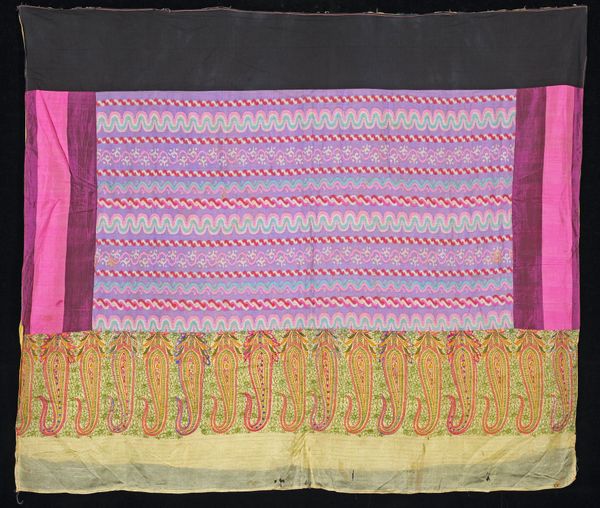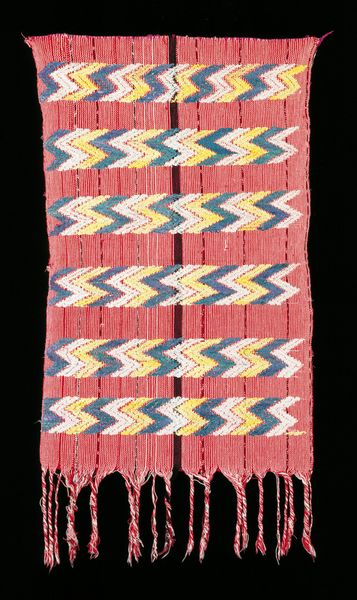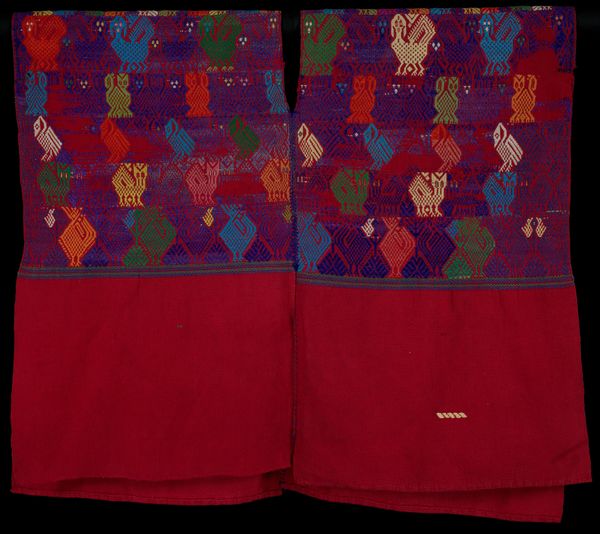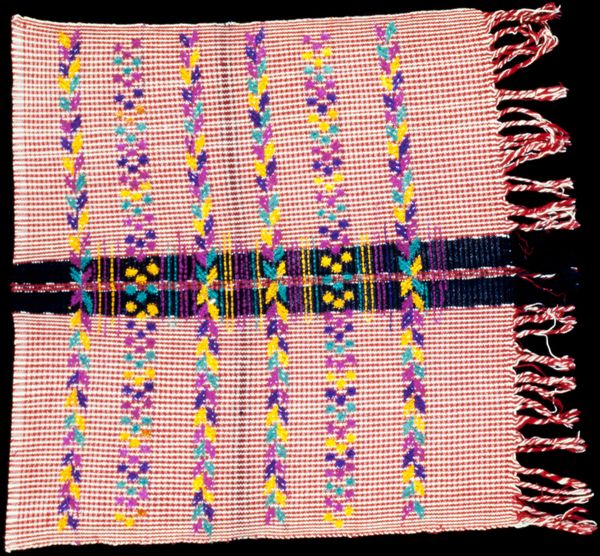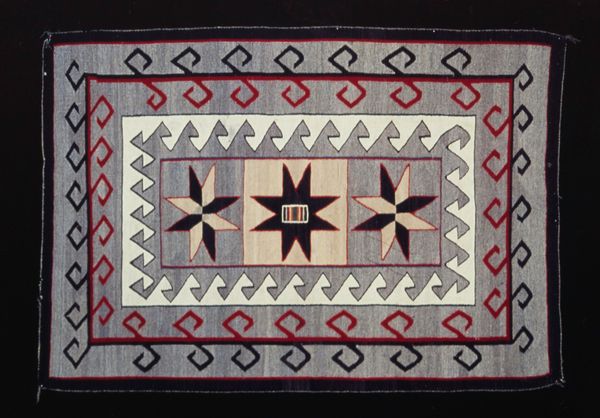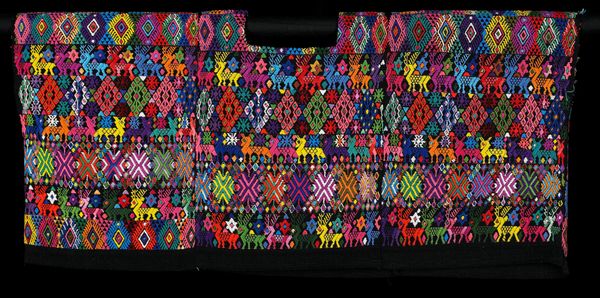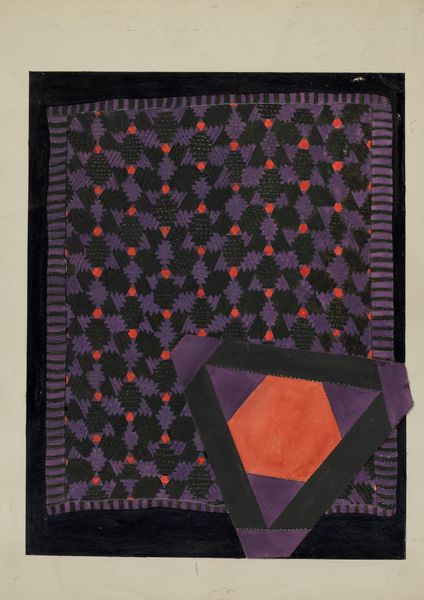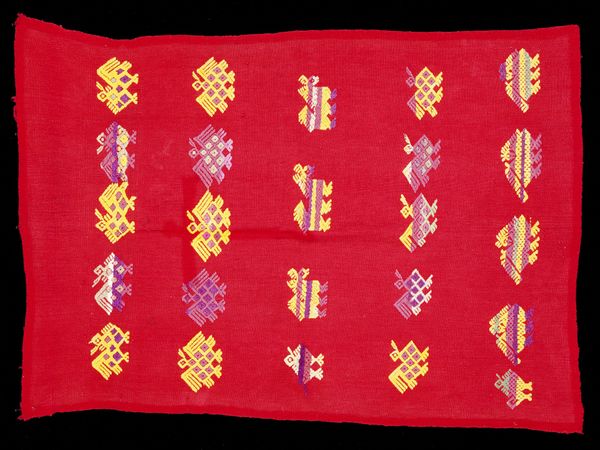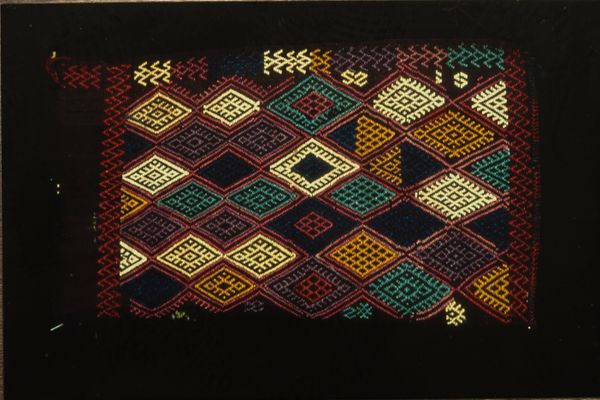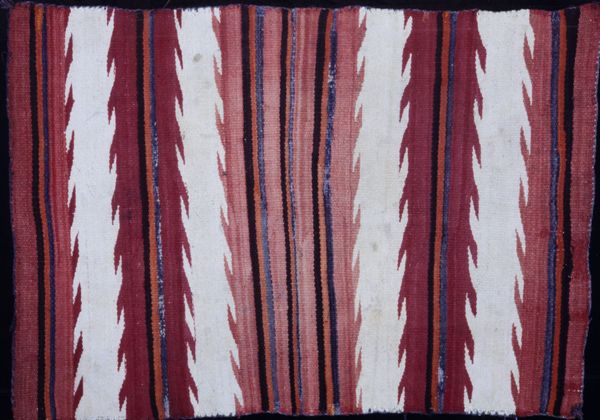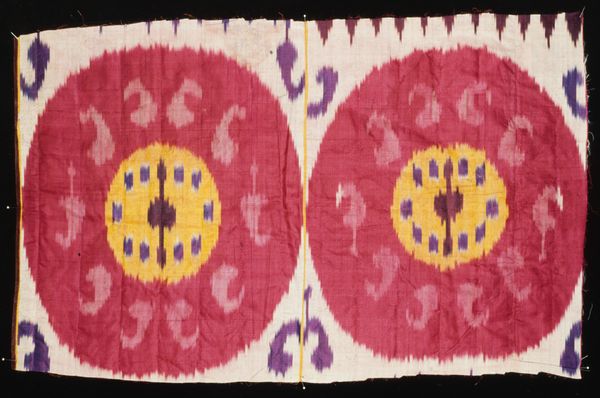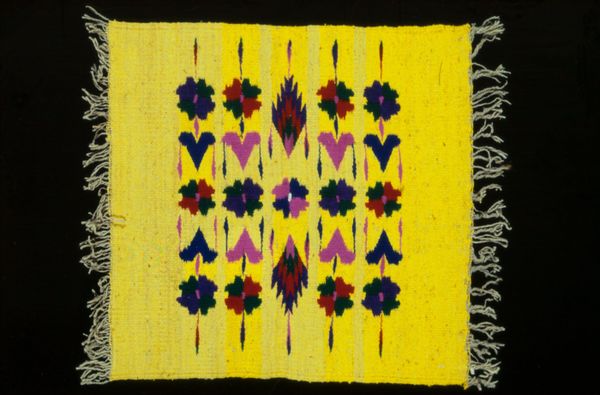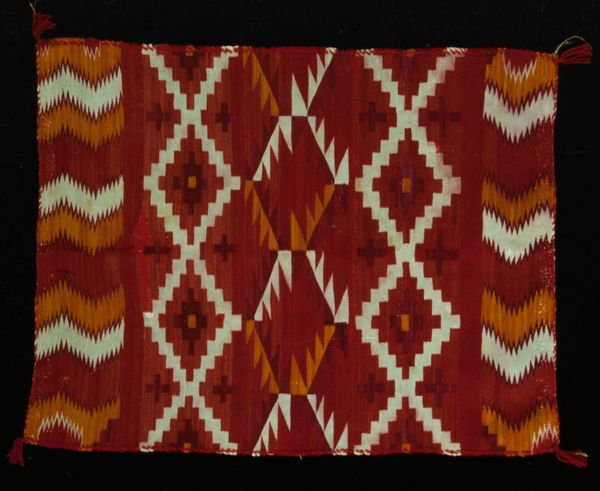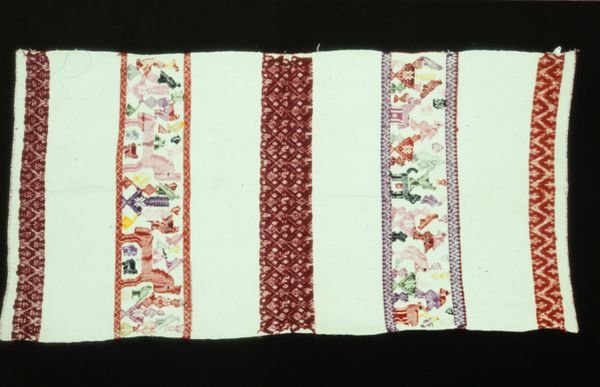
fibre-art, textile
#
fibre-art
#
textile
#
collage layering style
#
fashion and textile design
#
geometric pattern
#
pattern design
#
geometric
#
repetition of pattern
#
regular pattern
#
pattern repetition
#
textile design
#
imprinted textile
#
layered pattern
#
indigenous-americas
Dimensions: 62 5/8 x 68 in. (159.07 x 172.72 cm)
Copyright: Public Domain
Editor: This is the "Friendship Blanket," made around 1900 by an artist of the Wazhazhe (Osage) Nation. It's crafted from wool, using what looks like a complex fiber art technique. The dark backdrop with the bold handprints gives it a striking, almost solemn feel. What stories do you think this piece holds? Curator: Oh, it's practically whispering them, isn't it? That darkness you perceive…think of it as the rich, fertile earth from which life springs. The Osage, part of the great Mississippi Valley civilization, viewed hands as symbols of action, labor, and connection. These aren't just any hands; they are offering, gesturing toward kinship and alliance. Editor: So, the red hands are more about giving than, say, warning? Curator: Exactly! Although red can symbolize many things, its vibrancy here sings of vitality and shared lifeblood. Notice the geometric patterns framing the dark space. What do they suggest to you? Editor: A boundary, maybe? Or perhaps… pathways? Like rivers flowing? Curator: Ah, I love that. Pathways, connections... precisely! These geometric forms could represent the cosmos, the interconnectedness of all things. They’re rendered in calming colors, speaking to balance and harmony. These blankets were often exchanged during ceremonies. Can you imagine receiving this as a pledge of friendship? Editor: Wow, it makes you consider the weight of such a gift, something handmade, laden with symbolism… not just something you'd buy in a store. Curator: Precisely! And doesn't that thought reframe the object entirely? Editor: Absolutely. It’s far more potent knowing it represents a genuine bond, skillfully crafted and rich with cultural meaning. Thank you for helping me connect with this in such a meaningful way.
Comments
minneapolisinstituteofart almost 2 years ago
⋮
Plains Indians have a long tradition of embellishing blankets with a variety of appliqués. Before the introduction of cloth, they wore decorated buffalo hides over their shoulders and hips. In an effort to have the newest styles, many Plains Indian tribes traded for garments that were created by other groups. When Euro-American traders brought Stroudcloth-wool made in the town of Stroud in Gloucestershire County, England-it quickly became the preferred material for fashioning garments and blankets. First silk, then satin was used to decorate Stroudcloth blankets with geometric patterns using a reverse appliqué technique of sewing cutout ribbon patterns onto a background of a contrasting color ribbon. The more complex the design, the more desirable and valued the object was to own and wear. This blanket makes a powerful statement about the creativity and artistic heritage of the Osage people. Commonly known as a Friendship Blanket, because they were given to friends and supporters during ceremonies, they continue to be used by the Osage people today. The hands may represent friendship, and the silk ribbons illustrate the skill of the female artist who fashioned them.
Join the conversation
Join millions of artists and users on Artera today and experience the ultimate creative platform.
